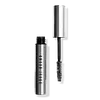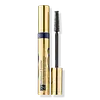What's inside
What's inside
 Key Ingredients
Key Ingredients

 Benefits
Benefits

 Concerns
Concerns

 Ingredients Side-by-side
Ingredients Side-by-side

Isododecane
EmollientWater
Skin ConditioningTrisiloxane
Skin ConditioningDimethicone Silylate
Ptfe
Sorbitan Olivate
EmulsifyingSorbitan Tristearate
EmulsifyingPolyisobutene
Kaolin
AbrasiveSilica Silylate
EmollientTrihydroxystearin
Skin ConditioningDiisopropyl Adipate
EmollientCopernicia Cerifera Wax
Quaternium-90 Bentonite
Microcrystalline Wax
Emulsion StabilisingHectorite
AbsorbentCholesterol
EmollientCaprylyl Glycol
EmollientPropylene Carbonate
SolventMethicone
EmollientHexylene Glycol
EmulsifyingMagnesium Salicylate
PreservativePhenoxyethanol
PreservativeMica
Cosmetic ColorantIron Oxides
CI 77891
Cosmetic ColorantCI 77742
Cosmetic ColorantCI 77288
Cosmetic ColorantCI 77289
Cosmetic ColorantCI 75470
Cosmetic ColorantCI 77510
Cosmetic ColorantCI 77163
Cosmetic ColorantCI 77007
Cosmetic ColorantIsododecane, Water, Trisiloxane, Dimethicone Silylate, Ptfe, Sorbitan Olivate, Sorbitan Tristearate, Polyisobutene, Kaolin, Silica Silylate, Trihydroxystearin, Diisopropyl Adipate, Copernicia Cerifera Wax, Quaternium-90 Bentonite, Microcrystalline Wax, Hectorite, Cholesterol, Caprylyl Glycol, Propylene Carbonate, Methicone, Hexylene Glycol, Magnesium Salicylate, Phenoxyethanol, Mica, Iron Oxides, CI 77891, CI 77742, CI 77288, CI 77289, CI 75470, CI 77510, CI 77163, CI 77007
Water
Skin ConditioningStearic Acid
CleansingMyrica Cerifera Fruit Wax
EmollientSucrose Polybehenate
EmollientPolyisobutene
Polyvinyl Acetate
Emulsion StabilisingParaffin
PerfumingAminomethyl Propanediol
BufferingIsostearic Acid
CleansingSilica
AbrasivePanthenol
Skin ConditioningPantethine
EmollientCopernicia Cerifera Wax
Kaolin
AbrasiveHydroxyethylcellulose
Emulsion StabilisingCholesterol
EmollientHydrogenated Olive Oil
Skin ConditioningPtfe
Vp/Eicosene Copolymer
Olea Europaea Fruit Oil
MaskingOlea Europaea Oil Unsaponifiables
Skin ConditioningSodium Polyacrylate
AbsorbentRosmarinus Officinalis Leaf Extract
AntimicrobialSimethicone
EmollientPolyester-5
Pvp
Emulsion StabilisingCaprylyl Glycol
EmollientHexylene Glycol
EmulsifyingNylon-6
Laureth-4
EmulsifyingPolyethylene Terephthalate
Nylon-66
Synthetic Fluorphlogopite
Chlorphenesin
AntimicrobialPhenoxyethanol
PreservativeCI 77891
Cosmetic ColorantMica
Cosmetic ColorantCI 77491
Cosmetic ColorantCI 77492
Cosmetic ColorantCI 77499
Cosmetic ColorantCI 77266
Cosmetic ColorantCI 77510
Cosmetic ColorantCI 42090
Cosmetic ColorantCI 77007
Cosmetic ColorantCI 19140
Cosmetic ColorantCI 77163
Cosmetic ColorantCI 75470
Cosmetic ColorantCI 77289
Cosmetic ColorantCI 77288
Cosmetic ColorantWater, Stearic Acid, Myrica Cerifera Fruit Wax, Sucrose Polybehenate, Polyisobutene, Polyvinyl Acetate, Paraffin, Aminomethyl Propanediol, Isostearic Acid, Silica, Panthenol, Pantethine, Copernicia Cerifera Wax, Kaolin, Hydroxyethylcellulose, Cholesterol, Hydrogenated Olive Oil, Ptfe, Vp/Eicosene Copolymer, Olea Europaea Fruit Oil, Olea Europaea Oil Unsaponifiables, Sodium Polyacrylate, Rosmarinus Officinalis Leaf Extract, Simethicone, Polyester-5, Pvp, Caprylyl Glycol, Hexylene Glycol, Nylon-6, Laureth-4, Polyethylene Terephthalate, Nylon-66, Synthetic Fluorphlogopite, Chlorphenesin, Phenoxyethanol, CI 77891, Mica, CI 77491, CI 77492, CI 77499, CI 77266, CI 77510, CI 42090, CI 77007, CI 19140, CI 77163, CI 75470, CI 77289, CI 77288
Ingredients Explained
These ingredients are found in both products.
Ingredients higher up in an ingredient list are typically present in a larger amount.
Caprylyl Glycol is a humectant and emollient, meaning it attracts and preserves moisture.
It is a common ingredient in many products, especially those designed to hydrate skin. The primary benefits are retaining moisture, skin softening, and promoting a healthy skin barrier.
Though Caprylyl Glycol is an alcohol derived from fatty acids, it is not the kind that can dry out skin.
This ingredient is also used as a preservative to extend the life of products. It has slight antimicrobial properties.
Learn more about Caprylyl GlycolCholesterol is a class of organic molecules called lipids. It helps hydrate your skin and is essential to having a healthy skin barrier.
Our skin naturally contains cholesterol in the outermost layer. Besides cholesterol, it also contains ceramides and fatty acids. Cholesterol makes up about 1/4 of your skin's outer layer and barrier. Your skin barrier is responsible for keeping allergens and microbes out. Having a healthy skin barrier is also responsible for keeping your skin firm and plump.
Our bodies use cholestrol to create vitamin D, steroid hormones, and more.
Learn more about CholesterolCi 75470 is a bright-red pigment. It is AKA carmine.
Carmine is derived from insects such as the cochineal beetle. This ingredient has been used as a natural dye for over 2000 years.
This pigment is called Ultramarine blue lazurite. It gives a saturated blue color, but can be used to create other colors as well.
According to the manufacturer, it is usually made from kaolin, sodium sulfate, sodium carbonate, sulfur, and charcoal.
This synthetic powder is used to add a pearly/white color in cosmetics.
Ci 77288 is used to add green pigment to products.
We don't have a description for CI 77289 yet.
This ingredient is used to impart a blue color. It is not water-soluble.
It goes by two different names:
1. Ferric Ferrocyanide: a synthetic dark blue pigment
2. Ferric Ammonium Ferrocyanide: a synthetic blue pigment, also called Prussian blue
In the EU, both of these colors must be labeled as 'CI 77510'.
Learn more about CI 77510Ci 77891 is a white pigment from Titanium dioxide. It is naturally found in minerals such as rutile and ilmenite.
It's main function is to add a white color to cosmetics. It can also be mixed with other colors to create different shades.
Ci 77891 is commonly found in sunscreens due to its ability to block UV rays.
Learn more about CI 77891Copernicia Cerifera Wax comes from a palm tree native to Brazil; another name for this ingredient is Carnauba Wax.
This ingredient is used to thicken texture and also leaves behind a film when applied.
Fun fact: This wax has the highest melting point of all natural waxes and low solubility.
Learn more about Copernicia Cerifera WaxHexylene Glycol is a surfactant. Glycols are a class of alcohols. Hexylene Glycol is a surfactant and emulsifier.
As a surfactant, Hexylene Glycol helps gather dirt and oil on your skin to be washed away.
As an emulsifier, Hexylene Glycol helps keep water and oil together. This prevents them from separating in a product. Hexylene Glycol also thins out the texture of a product by lessening viscosity.
Hexylene Glycol has a small molecular weight.
Learn more about Hexylene GlycolKaolin is a clay. It is used for oil control and to help minimize pores. Like other clays, kaolin has the ability to absorb excess sebum or oil. This can help clean out pores and mattify the skin.
Some types of kaolin may have exfoliating properties. When water is added to kaolin, it becomes a paste with small abrasive particles.
Most kaolin is a white color, but may be pink/orange/red depending on where it comes from.
The name 'kaolin' comes from a Chinese village named 'Gaoling'. Kaolin clay comes from rocks rich in kaolinite. Kaolinite, the mineral, has a silicate layered structure. Kaolinite is formed from chemical weathering of aluminum siilicate minerals.
Besides skincare, kaolin is commonly used to make glossy paper, in ceramics, toothpaste, and as medicine to soothe stomach issues.
Learn more about KaolinMica is a naturally occurring mineral used to add shimmer and color in cosmetics. It can also help improve the texture of a product or give it an opaque, white/silver color.
Serecite is the name for very fine but ragged grains of mica.
This ingredient is often coated with metal oxides like titanium dioxide. Trace amounts of heavy metals may be found in mica, but these metals are not harmful in our personal products.
Mica has been used since prehistoric times throughout the world. Ancient Egyptian, Indian, Greek, Roman, Aztec, and Chinese civilizations have used mica.
Learn more about MicaPhenoxyethanol is a preservative that has germicide, antimicrobial, and aromatic properties. Studies show that phenoxyethanol can prevent microbial growth. By itself, it has a scent that is similar to that of a rose.
It's often used in formulations along with Caprylyl Glycol to preserve the shelf life of products.
Polyisobutene is a synthetic polymer made from isobutene.
It is a film-forming agent and helps bind ingredients together.
Polyisobutene is not absorbed by the skin.
Learn more about PolyisobutenePTFE is a form of PFAS, or "Per- and polyfluoroalkyl substances". This ingredient has been used in commercial applications since the 1940's.
In cosmetics, PTFE is most commonly used as bulking agents, to improve consistency, or to improve texture.
PFAS compounds are currently under scrutiny due to possible health risks. This is mostly due to one type of PFAS: PFOA.
PFOA is no longer used in cosmetics and is highly restricted in many countries.
Today, PFAS are used widely in the medical field. They often play an important role in medical equipment such as catheters and medical implants.
In 2018, the Expert Panel for Cosmetic Ingredient Safety found PTFE to be safe for use in cosmetics and personal care productions.
This ingredient is commonly found in mascara (up to 13%) and hair bleach (up to 2.4%). Studies show this ingredient does not cause skin or eye irritation.
The EU allows PTFE to be used in cosmetics without restrictions.
All federal agencies do state further research about PFAS in cosmetics is needed.
Whether you choose to use this ingredient is a personal choice. We recommend adding this ingredient to your liked or disliked list so you can be notified anytime a product contains this ingredient.
Learn more about PtfeWater. It's the most common cosmetic ingredient of all. You'll usually see it at the top of ingredient lists, meaning that it makes up the largest part of the product.
So why is it so popular? Water most often acts as a solvent - this means that it helps dissolve other ingredients into the formulation.
You'll also recognize water as that liquid we all need to stay alive. If you see this, drink a glass of water. Stay hydrated!
Learn more about Water